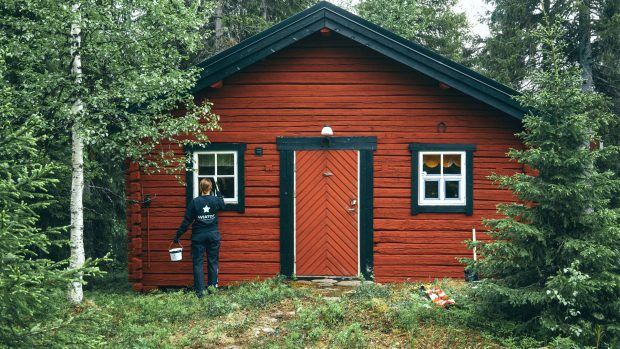Not only is home remodeling cheaper in the long run, but it’s also better for the environment. Plus, choosing to renovate rather than purchase a new one is more environmentally friendly since most houses are built with an initial build period that lasts around ten years.
To become eco-friendly, you may want to use renewable resources and energy. You can do this by using solar power, natural gas, and other new technologies to heat or cool your home. Plus, you can use recycled materials in your renovation project. When you are done, you’ll have a new home that is more energy-efficient.
Another great way to be eco-friendly is to ensure that you don’t waste any materials from the old home. If possible, try to keep everything taken out of the house and reuse it elsewhere. This will keep more natural resources from being used in the future.
Renovating an old home not only reduces waste and saves money but also increases the value of your property. So if you are looking for a great way to improve your house while saving money and helping the environment – consider remodeling your home instead of building a new one.
Here are our top eco-friendly home remodeling tips for sustainable living:
1. Choose Energy Efficient Appliances
If you’re remodeling, consider buying more energy-efficient appliances. This will not only save you money on your electric bill, but it will also help reduce your environmental impact. Plus, many states offer tax credits to anyone who buys energy-efficient appliances.
But if you are considering buying an energy-efficient gas appliance – it’s best to first check with gas safety register certificate in your area because not having a gas certificate could put penalties or significant fines on your usage of the gas appliance.
2. Keep Your Home Warm and Cool
The way you heat your home can significantly impact the environment. For example, heating your house with a gas furnace can be more expensive than using an electric heater. However, if you choose to buy a gas furnace, purchase the Energy Star version. It will save you money on your heating bill and help reduce greenhouse emissions.

Photo by Collov Home Design on Unsplash
But it’s important to keep in mind that most gas appliances require a gas certificate. So make sure to check with your council to see which one is more suitable for you.
3. Use Recycled Materials Whenever Possible
If you’re remodeling, consider using recycled materials whenever possible. This will help reduce your environmental impact and save money! And it doesn’t have to be expensive or hard to find either – many stores offer a wide range of recycled goods at competitive prices.
4. Use Eco-friendly Paints, Stains & Other Building Materials
When remodeling, consider using eco-friendly paint products and stains instead of choosing petrochemicals or silicates. This will help reduce your environmental impact and save money. But if you can’t find these paints at a local store, companies out there offer eco-friendly paints and stains.
5. Use Renewable Resources for Construction
When remodeling an old home, it is best to use sustainable building materials. These include items such as bamboo, recycled plastic lumber, and even salvaged wood from old buildings.
When choosing new windows and doors, consider using recycled glass or window frames. This will help reduce the amount of waste in landfills each year.
6. Get a Tankless Water Heater
Tankless water heaters use significantly less electricity than traditional water heaters, and they don’t waste as much water. If you’re remodeling a home, consider getting one of these instead of a conventional model to save money while reducing your environmental impact.
7. Add Solar Panels to Your Roof
If you’re remodeling your home, you might consider adding solar panels to your roof. This will help reduce your electricity bill, and you can also get a tax break for installing them. If you’re considering solar panels for your house, consider a system that will work well with your home style and the weather in your area. You can consider this a win-win situation.
8. Install Energy Efficient Lighting
It’s important to use energy-efficient lighting. This will help save you money on your electricity bill. While the average person only uses about 15% of the electricity they pay for each month, using energy-efficient lights can help you significantly reduce that number and make a big impact on your environment.
9. Use Low-VOC Paint
There are several different types of paint out there, but not all are good for the environment. If you’re remodeling, then make sure to choose paint with low volatile organic compounds (VOCs).

Photo by Karl Hedin on Unsplash
This will help reduce the impact that your home has on the environment. However, it’s even better if you can find paint made from recycled materials and uses zero VOCs.
10. Use a Compost Pile
If you’re looking for a way to cut down on your garbage output, consider starting a compost pile. Compost is one of the best ways to recycle food scraps and other things that you don’t need or use anymore. You can even create compost bins made out of recycled materials like pallets or old pieces of wood.
11. Insulate Your Home
Insulate your home by adding insulation under the flooring, your walls, etc. Insulation is one of the most important factors for heating/cooling efficiency because it keeps heat from escaping or entering through walls or floors that aren’t insulated.
Conclusion
So there you have it! 11 eco-friendly home remodeling tips for sustainable living. I hope you find this list helpful and use these ideas to make your life easier and more comfortable. I know that I will be using these tips myself. If you have anything that you would like to add or anything that I missed, please feel free to let me know in the comments below.
Thanks for reading!
Who is the author?
 Shoaib provides ghostwriting and copywriting services. His educational background in the technical field and business studies helps him in tackling topics ranging from career and business productivity to web development and digital marketing. He occasionally writes articles for gas safety certs.
Shoaib provides ghostwriting and copywriting services. His educational background in the technical field and business studies helps him in tackling topics ranging from career and business productivity to web development and digital marketing. He occasionally writes articles for gas safety certs.





![women [longevity live]](https://longevitylive.com/wp-content/uploads/2020/01/photo-of-women-walking-down-the-street-1116984-100x100.jpg)









